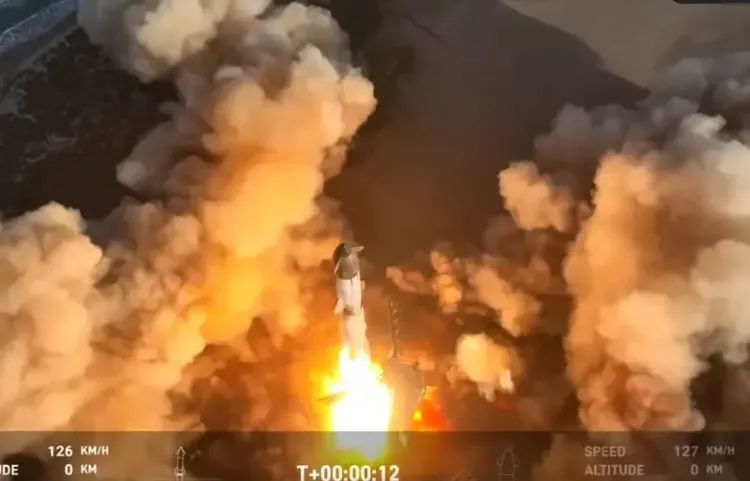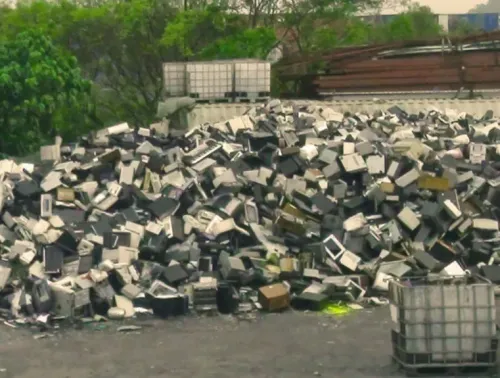SpaceX's Starship Suffers Communication Loss During Eighth Flight Test

Synopsis
Key Takeaways
- SpaceX lost contact with Starship shortly after launch.
- The spacecraft encountered issues with Raptor engines.
- No risk to public safety was reported.
- Immediate coordination with safety officials was enacted.
- Plans for further investigation and improvements were announced.
New Delhi, March 7 (NationPress) SpaceX, founded by Elon Musk, experienced a communication failure with its spacecraft shortly after the commencement of its eighth test flight of the massive Starship rocket on Friday.
The launch took place at the Starbase facility in South Texas at 6:30 p.m. EST on Thursday (5:00 a.m. Friday IST).
Approximately seven minutes post-liftoff, the first-stage booster of Starship, known as Super Heavy, was successfully captured by the launch tower's Mechazilla arms.
“Mechazilla has successfully captured the Super Heavy booster!” Musk announced via social media platform X. However, shortly thereafter, the Starship spacecraft experienced a drop in altitude control and lost communication with ground control.
According to SpaceX’s blog, “Before the conclusion of the ascent burn, a significant event in the rear section of Starship led to the failure of multiple Raptor engines. This subsequently caused a loss of attitude control and ultimately resulted in the communication blackout with Starship.”
Final communications with Starship were recorded approximately 9 minutes and 30 seconds post-liftoff, the company noted.
SpaceX had also encountered a communication blackout during its seventh test flight. The organization confirmed that “Starship operated within a designated launch area” and ensured there was no risk to the “public on land, at sea, or in the air.”
They promptly coordinated with the FAA, Air Traffic Control, and other safety officials to execute pre-arranged contingency measures following the incident.
SpaceX clarified that any remaining debris would have landed in the pre-designated Debris Response Area.
Furthermore, the company assured that “there are no hazardous materials in the debris, and no significant effects are anticipated on marine life or water quality.”
“In tests like this, the real achievement lies in the insights we gain, and today’s flight will enhance the reliability of Starship,” the company conveyed on X.
They also announced intentions to conduct a comprehensive investigation in partnership with the FAA and to “implement corrective measures” for future Starship test flights.










